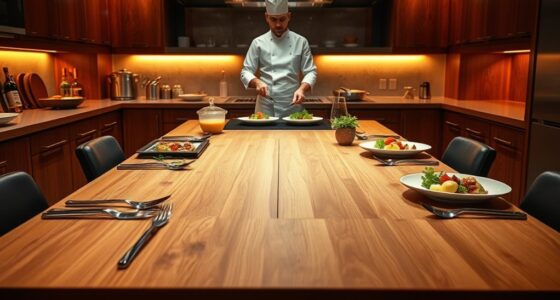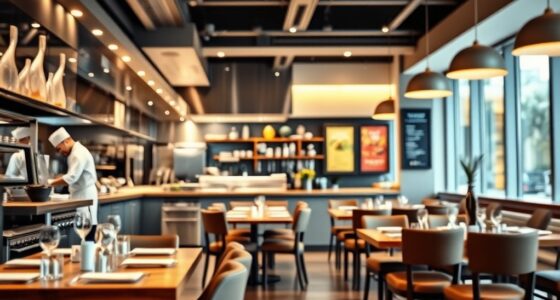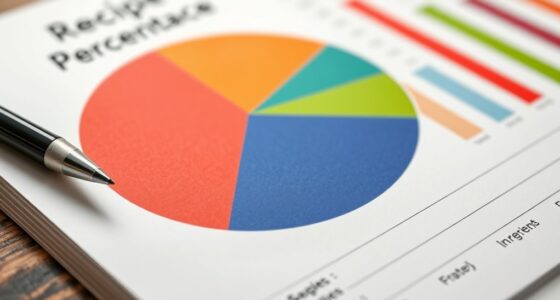Understanding the difference between cash-flow and profit is key to running a successful restaurant. Cash-flow shows the actual money coming in and out daily, helping you cover bills and payroll on time. Profit, on the other hand, indicates the overall financial success after expenses. Relying only on profit can mask cash shortages that affect daily operations. Keep exploring how mastering both can keep your restaurant financially healthy and thriving long-term.
Key Takeaways
- Profit shows overall financial success after expenses, while cash-flow reflects daily cash movements crucial for operations.
- Profit includes non-cash items like depreciation; cash-flow focuses solely on actual cash transactions.
- A business can be profitable on paper but face cash shortages due to delayed receivables or expenses.
- Monitoring both ensures timely bill payments and avoids running out of cash despite high sales.
- Effective management balances immediate liquidity with long-term profitability for sustainable restaurant success.
Understanding Cash-Flow and Its Significance
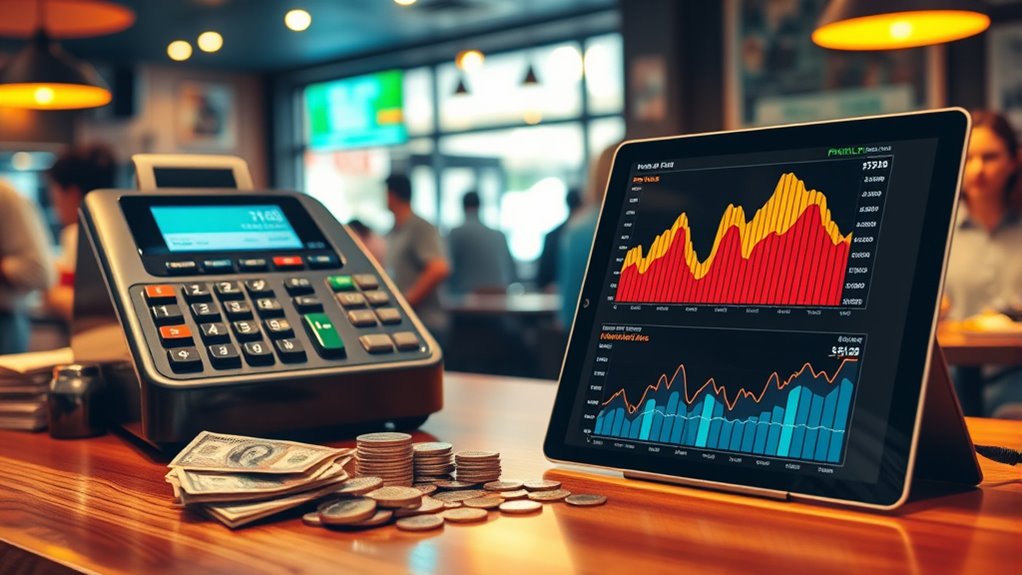
Understanding cash-flow is crucial because it shows how money moves in and out of your restaurant on a daily basis. When you track cash-flow, you get a clear picture of your daily financial health. It tells you if you’re bringing in enough cash to cover expenses like wages, ingredients, and bills. Even if your restaurant shows a profit on paper, poor cash-flow can cause cash shortages that threaten daily operations. By managing cash-flow effectively, you ensure you always have enough funds for essentials and avoid costly surprises. Monitoring cash-flow helps you identify slow-paying customers, excess inventory, or unnecessary expenses. This ongoing awareness allows you to adjust quickly, keeping your restaurant financially stable and ready to grow. Recognizing cash-flow management as a key aspect of financial health can help you develop strategies to improve your cash position and sustain your business long-term.
Deciphering Profit and Its Role in Business Success
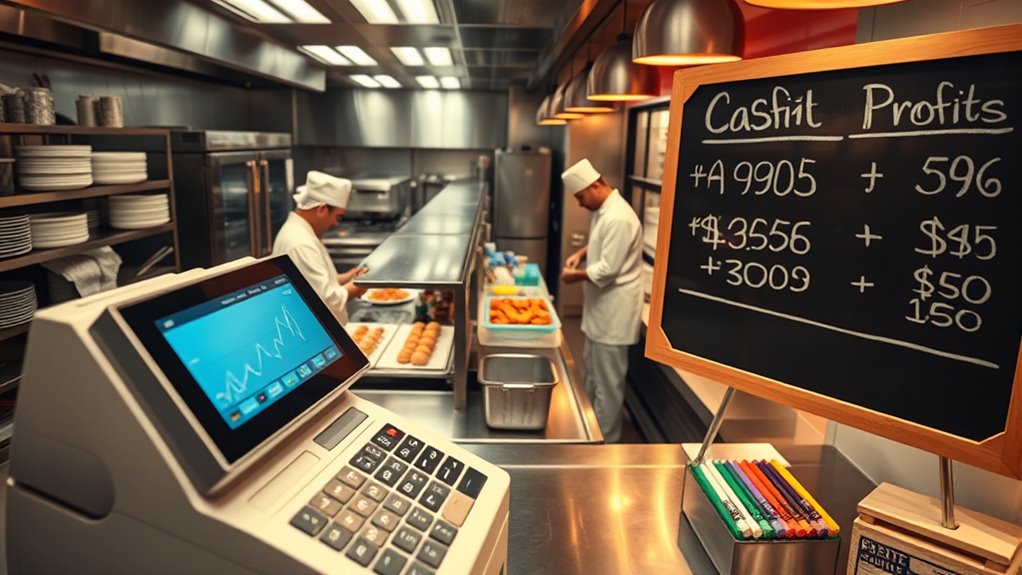
While cash-flow shows the money moving through your restaurant day-to-day, profit reveals the overall financial success after all expenses are deducted. Profit tells you whether your business is genuinely earning money or just covering costs. It’s the bottom line that indicates if your restaurant is sustainable in the long run. To decipher profit, review your income statement, subtracting costs like ingredients, labor, rent, and utilities from your sales. A healthy profit means you’re pricing appropriately, controlling expenses, and generating value for your efforts. Recognizing profit helps you make smarter decisions—whether to expand, cut costs, or adjust pricing. Ultimately, profit isn’t just about making money; it’s a crucial indicator of your restaurant’s ability to thrive and grow over time. Additionally, understanding how financial metrics are calculated can provide deeper insights into your business performance.
Key Differences Between Cash-Flow and Profit
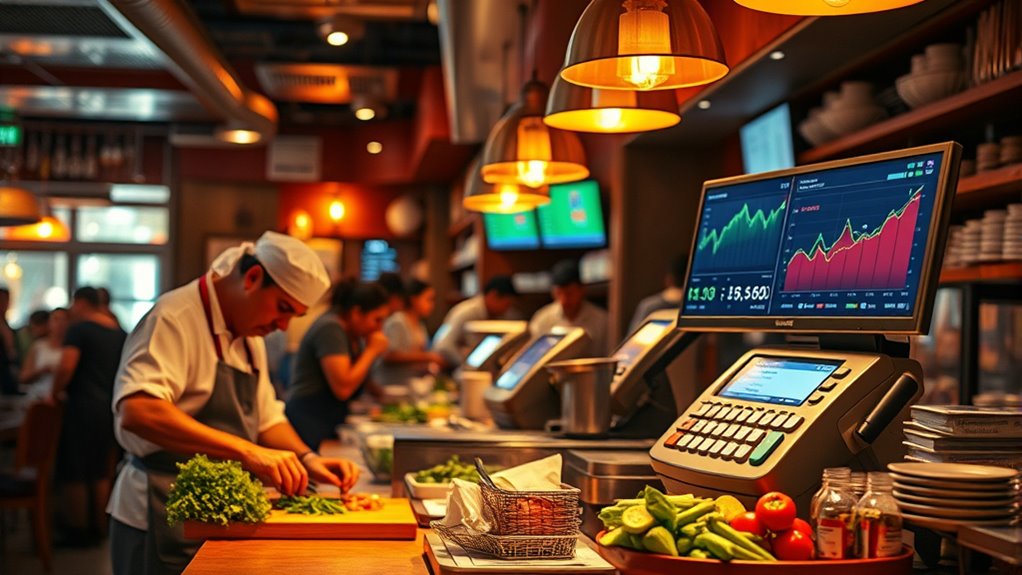
Cash-flow and profit are two essential but distinct measures of your restaurant’s financial health. Profit shows whether your business is making money after expenses, while cash-flow reveals how cash actually moves in and out of your restaurant. Profit includes non-cash items like depreciation and ignores the timing of payments. Cash-flow focuses on real cash transactions, showing if you can cover bills and payroll promptly. You might have a profitable restaurant on paper but struggle with cash shortages if your receivables are delayed or expenses are due before income is received. Conversely, positive cash-flow doesn’t always mean you’re profitable long-term if your profits are inflated by non-cash earnings. Understanding these differences helps you manage your restaurant’s finances more effectively and avoid surprises. Developing a digital-friendly environment at home can also support better financial literacy for restaurant owners and managers seeking to optimize their business operations.
Common Mistakes in Managing Cash-Flow and Profit
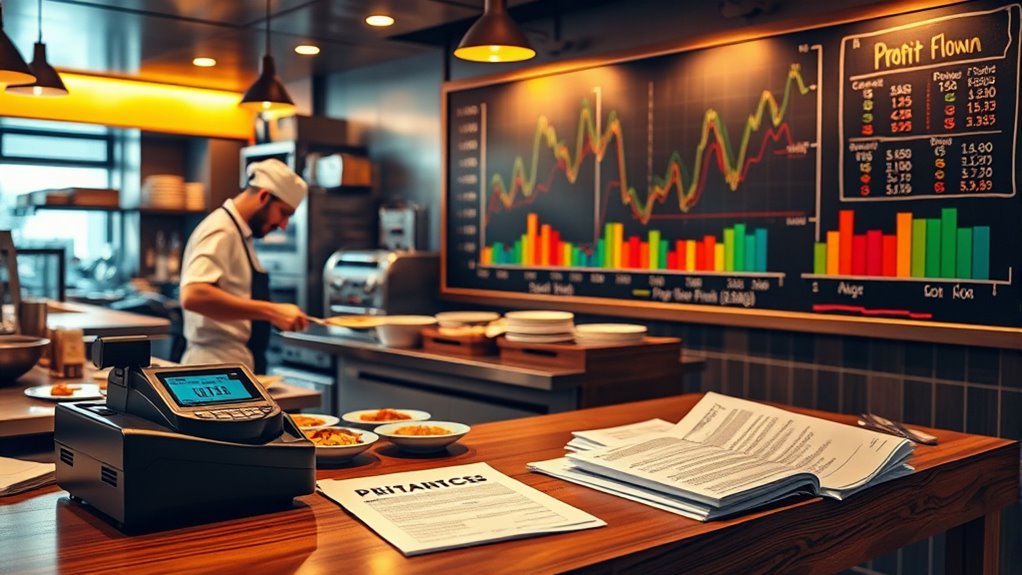
One common mistake restaurant owners make is focusing too much on profit without paying enough attention to cash-flow. You might see your books showing a profit, but struggle to cover daily expenses. This happens when sales look good, but cash isn’t coming in fast enough. To visualize this, consider the table:
| Cash-Flow Focus | Profit Focus |
|---|---|
| Daily cash needs | Monthly profit reports |
| Immediate expenses | Year-end financials |
| Cash in hand | Accounting profit |
You may have high sales, but if customers delay payments or inventory costs spike, cash flow suffers. Ignoring this can lead to running out of cash, even when profits appear healthy. Managing both requires vigilance and timely action. Additionally, understanding industry transformations like AI automation can help streamline operations and improve cash flow management.
Strategies to Optimize Both Cash-Flow and Profit
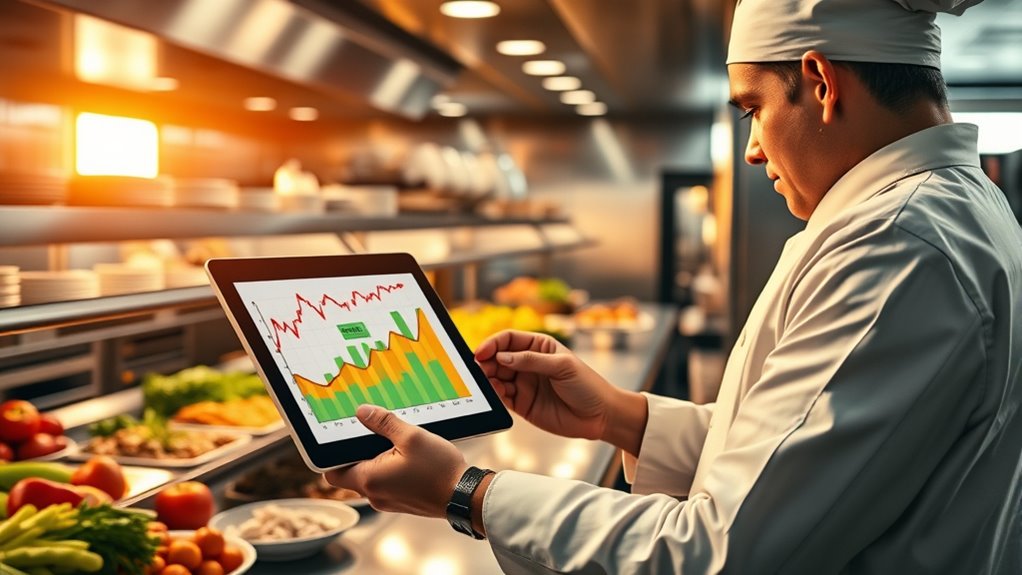
To effectively optimize both cash-flow and profit, you need to implement strategies that balance immediate liquidity with long-term financial health. Start by closely monitoring your cash flow daily to identify gaps and prevent shortages. Manage inventory efficiently to avoid overstocking or stockouts, which tie up cash or cause lost sales. Control costs strictly, including labor and supplies, without sacrificing quality. Boost revenue by upselling, offering specials, or expanding your marketing reach. Regularly review pricing strategies to ensure they cover costs and maximize margins. Additionally, investing in financial planning tools to forecast future cash needs and profits can help you make informed decisions. By balancing these tactics, you’ll improve cash flow while driving sustainable profitability, ensuring your restaurant’s ongoing success.
Frequently Asked Questions
How Can Seasonal Fluctuations Affect Restaurant Cash-Flow and Profit?
Seasonal fluctuations impact your restaurant’s cash flow and profit by causing income to vary throughout the year. During peak seasons, you may see increased cash inflow and higher profits, but off-peak periods can lead to cash shortages and reduced profits. To manage this, you should plan for slow months by saving excess during busy times, adjusting staffing levels, and controlling costs to maintain steady cash flow and overall profitability year-round.
What Are the Best Tools to Track Cash-Flow in a Restaurant?
You need effective tools to keep track of your restaurant’s cash flow. Consider using accounting software like QuickBooks or Xero, which automatically monitor income and expenses. Point-of-sale systems like Square or Toast help track daily sales in real time. Additionally, cash flow management tools like Float or Pulse can forecast future cash needs. These tools give you clear insights, helping you make informed decisions and maintain healthy cash flow.
How Does Debt Impact Cash-Flow Management in Restaurants?
Debt substantially impacts your cash-flow management because it requires regular payments, which can strain your restaurant’s finances. When you have high debt levels, you need to allocate cash toward interest and principal, reducing funds available for daily operations and emergencies. This can create cash shortages, making it harder to cover expenses or invest in growth. Managing debt wisely ensures you maintain steady cash-flow and avoid financial difficulties.
Can a Restaurant Be Profitable but Have Poor Cash-Flow?
You might think your restaurant’s doing well because it’s profitable, but poor cash-flow tells a different story. Profit shows your earnings over time, while cash-flow reveals how money moves in and out. Even with high profits, delays in receivables or large expenses can leave you short on cash. So, yes, a restaurant can be profitable on paper but struggle to cover daily costs if cash-flow isn’t managed properly.
What Are Signs of Cash-Flow Problems Before Profits Decline?
You need to watch for signs of cash-flow problems before profits drop. If you notice delayed supplier payments, frequent overdrafts, or difficulty covering payroll, it indicates cash issues. Unpaid bills, declining cash reserves, or trouble funding daily operations also signal trouble ahead. Staying alert to these signs helps you address cash-flow problems early, preventing them from negatively impacting your restaurant’s profitability and overall health.
Conclusion
Remember, cash-flow is the heartbeat of your restaurant, keeping things running smoothly, while profit is the reward for your efforts. Neglecting one can cause your business to stumble like a house of cards. By mastering both, you ensure your restaurant not only survives but thrives. Keep a close eye on your numbers, and you’ll navigate the financial maze with confidence. After all, a well-balanced cash-flow and profit are the wings that let your restaurant soar.


